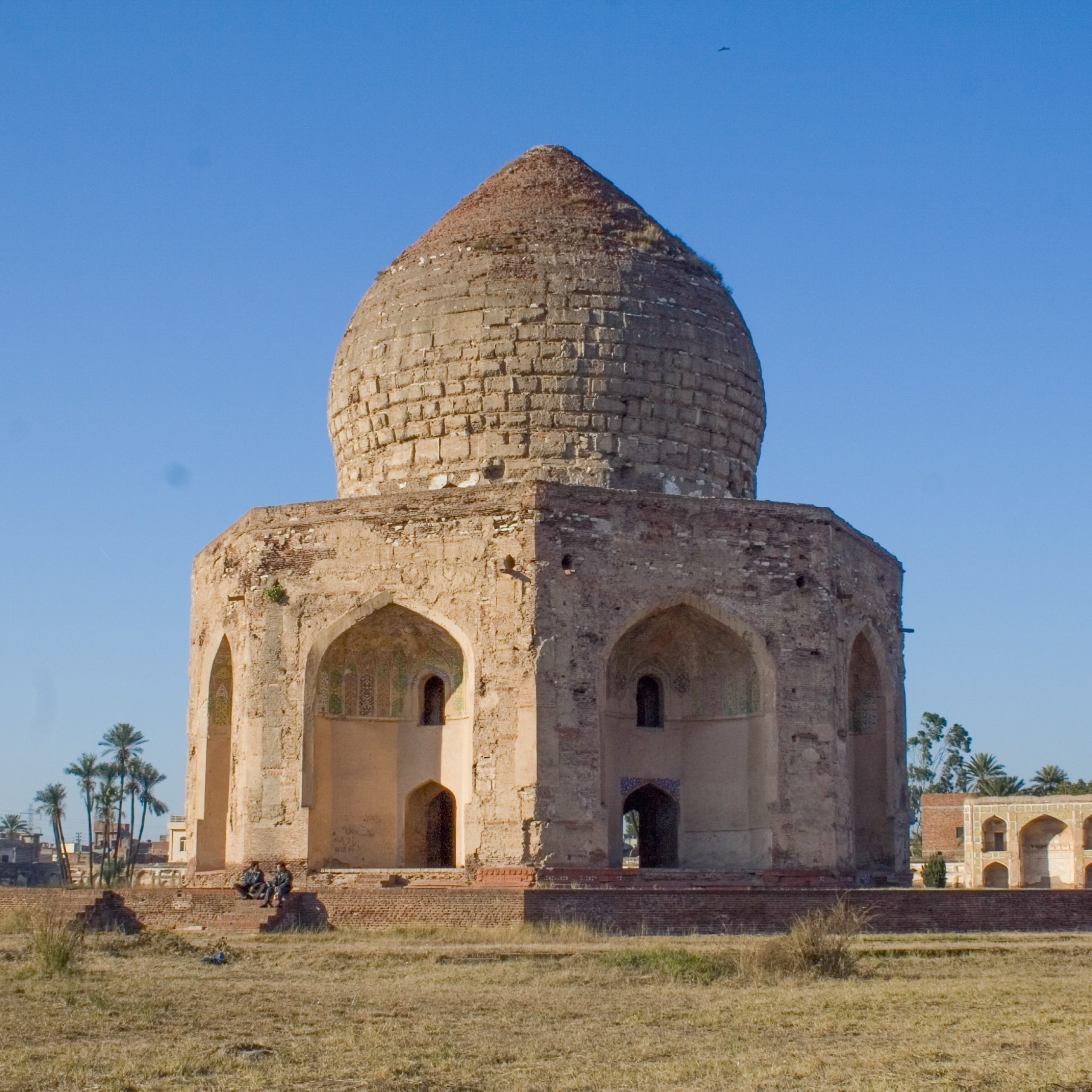The Tomb of Asif Khan is a magnificent edifice crowned by a high bulbous dome. Asif Khan’s tomb is situated in Shahdara Bagh, adjacent to Akbari Sarai, in the city of Lahore, Punjab, Pakistan. Like that of other noble persons in the Mughal courts, Asif Khan’s tomb is also octagonal in shape and embellished using attractive designs and colours. Octagonal shaped tombs were only used for Mughal nobles and never for Mughal emperors.
Asif Khan was the title given to the Mughal statesman Mirza Abdul Hassan Jah, who was also known as Asif Jah. He was the brother the of Empress Noor Jahan, father of Arjumand Bano Begum who later became the consort of Shah Jahan under the name of Mumtaz Mahal, and he was also brother-in-law to the Mughal Emperor Jahangir. Asif Khan was elevated as Khan e Khana, commander in chief, and became governor of Lahore a year later.
Asif Khan died in a battle against the forces of rebel Raja Jagat Singh in 1641 and his tomb was commissioned to be built by emperor Shah Jahan. It cost 300,000 rupees and four years from 1641 to 1645 to complete the construction of this marvellous erection. The tomb is only separated by Akbari Sarai from Jahangir’s tomb which makes an axis.
Layout
The garden, where to tomb stands, measures 300 yards to each side and was divided by long pools along pathways into four squares (the Persian Chahar Bagh system). Each square is set with fountains, water reservoirs, and trails. The tomb once had water reservoirs at its four corners to fed fountains and pathways.
The garden was accessible through the gates erected on its northern and southern walls. The southern gate is a double storied structure, square in shape, serves as the primary entrance to the garden complex. Its southern face is decked with red stone and white marble while the other three faces are decorated with plasterwork. Its interiors feature small chambers. Its central portion features a tall two-story iwan portal finished with stucco work and flooring is done in geometrical design brickwork. The northern side gate is known as Jawab (response) gate, a two-storied structure with a central arched iwan portal flanked by four smaller portals. Its front is adorned with intricate tile work (Kashi Kari) but much of the intricate ornamental work has already gone. There is a small mosque found in the eastern wall which was used as a residence during the British era while there is access to Jahangir’s Tomb via the Akbari Sarai in the western wall.
Architecture
Asif Khan’s tomb was built in Central Asian style architecture. The tomb was noted to feature some of the finest examples of building art and craft at the time of construction.
Standing in the centre of a vast garden the tomb is erected on a 3-foot 9-inch elevated podium accessible by stairs. It was built octagonal in shape with each side measuring 38 feet 8 inches with access to its interior from eight sides and arched window looking into the tomb. Each side of the tomb has a deeply recessed iwan or alcove.
The exterior of the tomb was originally decorated with red sandstone and rich marble stone inlay work. Its finishing was done with stucco tracery and blue Kashi tiles. The high bulbous double dome, resting on the octagonal base, was originally covered with white marble finishing. The use of bulbous domes was initiated by Emperor Shah Jahan and were never used before.
The interior of the tomb, renowned for its lavish use of white marble and precious inlay, ornamented with very bold stucco design, tile mosaic, and Ghalib Kari. The inner dome ceiling is decked in high plaster relief of interlacing patterns. The central cenotaph is made of pure marble carved with inscriptions from the Holy Qur’an like that in the nearby tomb of Emperor Jahangir. The floor on which the tomb stands was built red limestone (Sang-e-Abri) which does not exist anymore.
Sikh Era Mutilation
During the rule of the Sikh Empire, Asif Khan’s tomb along with Jahangir’s Tomb and other monuments were heavily damaged. Notable Sikh rulers like Gujjar Singh, Lahna Singh, and Subha Singh carried out the damages and planted large Pipal trees next to the tomb to obstruct its views which were removed later. Its marble, various decorative stones, and sandstones were pillaged and installed in the Golden Temple in Amritsar and to build the Hazuri Bagh Baradari in Lahore.
If the tomb had existed in its original shape with all designs and colours, it would have been a masterpiece. It did not attract much attention because its beauty was snatched by the Sikhs. It was later repaired by did not gain its glory. Also, the gardens and gateways were repaired too by the British and its walls were swept away by flooding in 1955 when River Ravi was inundated, and a second flood occurred in 1973 while repair work was carried out in 1986-87. But the tomb and its walls are still in disappointing condition.
The tomb, along with the adjacent Akbari Sarai and the Tomb of Jahangir, is on the tentative list as a UNESCO World Heritage Site.




Comment (0)